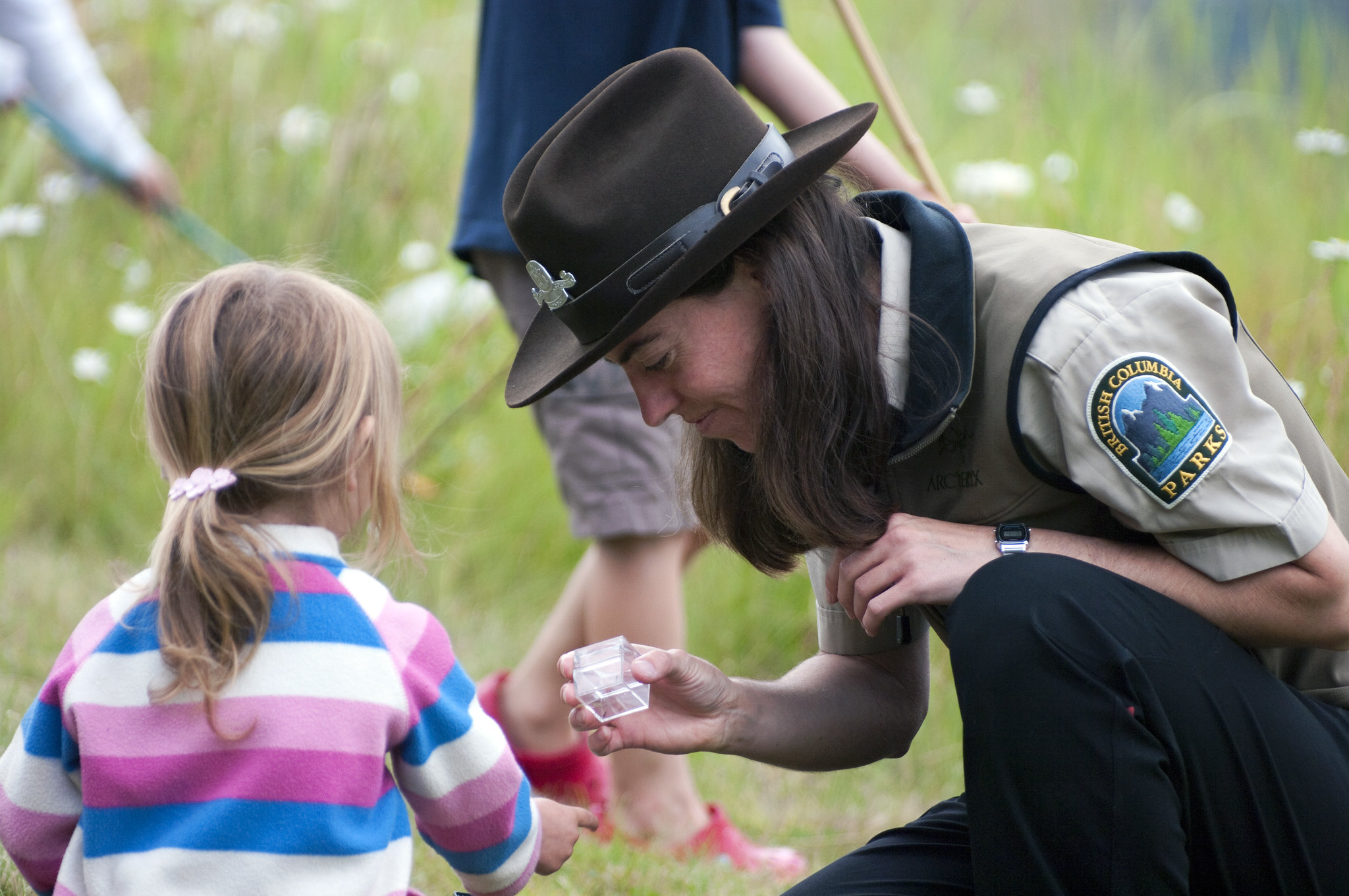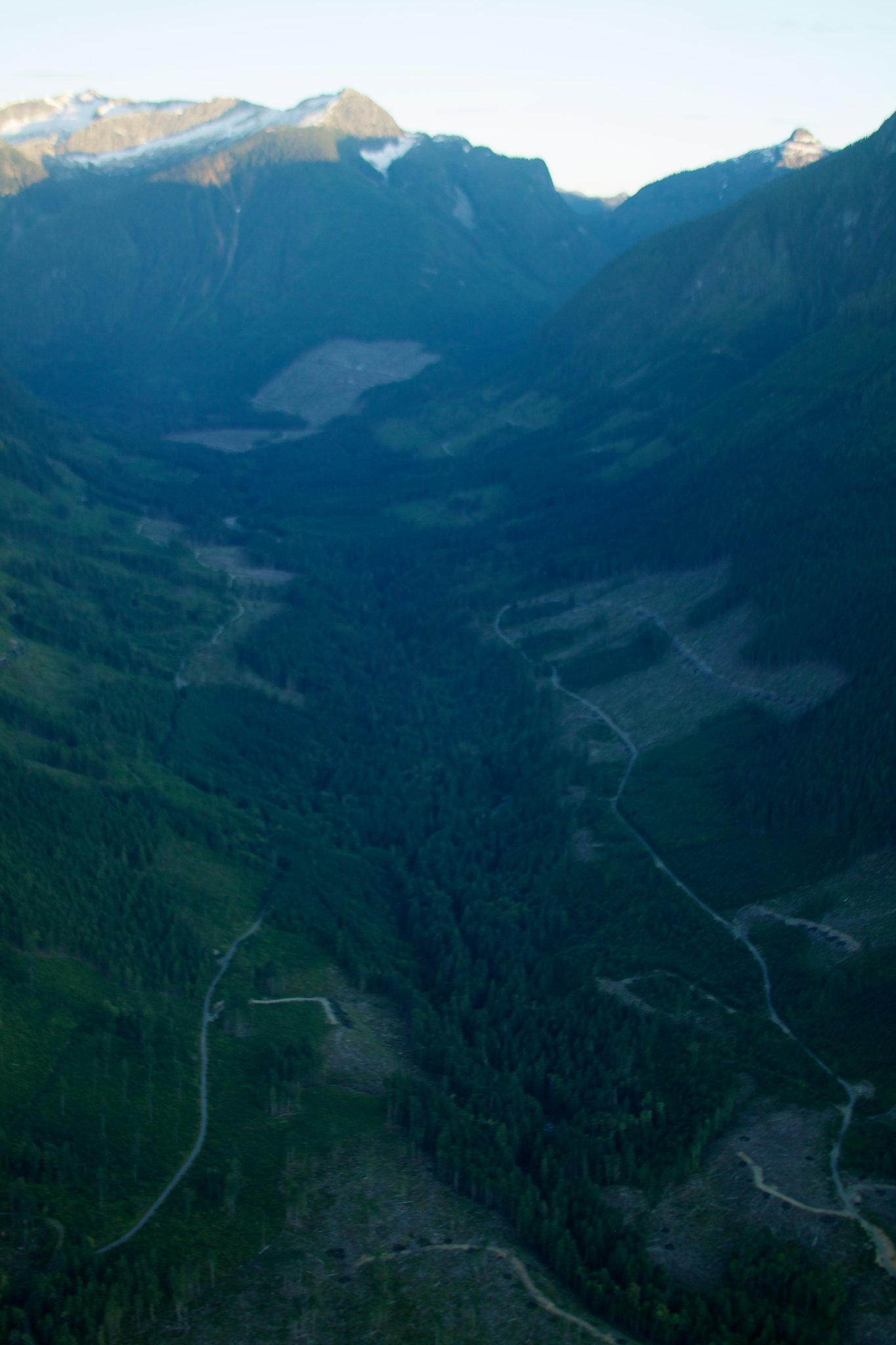10.4: Environmental Management in BC
- Page ID
- 9362
\( \newcommand{\vecs}[1]{\overset { \scriptstyle \rightharpoonup} {\mathbf{#1}} } \)
\( \newcommand{\vecd}[1]{\overset{-\!-\!\rightharpoonup}{\vphantom{a}\smash {#1}}} \)
\( \newcommand{\id}{\mathrm{id}}\) \( \newcommand{\Span}{\mathrm{span}}\)
( \newcommand{\kernel}{\mathrm{null}\,}\) \( \newcommand{\range}{\mathrm{range}\,}\)
\( \newcommand{\RealPart}{\mathrm{Re}}\) \( \newcommand{\ImaginaryPart}{\mathrm{Im}}\)
\( \newcommand{\Argument}{\mathrm{Arg}}\) \( \newcommand{\norm}[1]{\| #1 \|}\)
\( \newcommand{\inner}[2]{\langle #1, #2 \rangle}\)
\( \newcommand{\Span}{\mathrm{span}}\)
\( \newcommand{\id}{\mathrm{id}}\)
\( \newcommand{\Span}{\mathrm{span}}\)
\( \newcommand{\kernel}{\mathrm{null}\,}\)
\( \newcommand{\range}{\mathrm{range}\,}\)
\( \newcommand{\RealPart}{\mathrm{Re}}\)
\( \newcommand{\ImaginaryPart}{\mathrm{Im}}\)
\( \newcommand{\Argument}{\mathrm{Arg}}\)
\( \newcommand{\norm}[1]{\| #1 \|}\)
\( \newcommand{\inner}[2]{\langle #1, #2 \rangle}\)
\( \newcommand{\Span}{\mathrm{span}}\) \( \newcommand{\AA}{\unicode[.8,0]{x212B}}\)
\( \newcommand{\vectorA}[1]{\vec{#1}} % arrow\)
\( \newcommand{\vectorAt}[1]{\vec{\text{#1}}} % arrow\)
\( \newcommand{\vectorB}[1]{\overset { \scriptstyle \rightharpoonup} {\mathbf{#1}} } \)
\( \newcommand{\vectorC}[1]{\textbf{#1}} \)
\( \newcommand{\vectorD}[1]{\overrightarrow{#1}} \)
\( \newcommand{\vectorDt}[1]{\overrightarrow{\text{#1}}} \)
\( \newcommand{\vectE}[1]{\overset{-\!-\!\rightharpoonup}{\vphantom{a}\smash{\mathbf {#1}}}} \)
\( \newcommand{\vecs}[1]{\overset { \scriptstyle \rightharpoonup} {\mathbf{#1}} } \)
\( \newcommand{\vecd}[1]{\overset{-\!-\!\rightharpoonup}{\vphantom{a}\smash {#1}}} \)
\(\newcommand{\avec}{\mathbf a}\) \(\newcommand{\bvec}{\mathbf b}\) \(\newcommand{\cvec}{\mathbf c}\) \(\newcommand{\dvec}{\mathbf d}\) \(\newcommand{\dtil}{\widetilde{\mathbf d}}\) \(\newcommand{\evec}{\mathbf e}\) \(\newcommand{\fvec}{\mathbf f}\) \(\newcommand{\nvec}{\mathbf n}\) \(\newcommand{\pvec}{\mathbf p}\) \(\newcommand{\qvec}{\mathbf q}\) \(\newcommand{\svec}{\mathbf s}\) \(\newcommand{\tvec}{\mathbf t}\) \(\newcommand{\uvec}{\mathbf u}\) \(\newcommand{\vvec}{\mathbf v}\) \(\newcommand{\wvec}{\mathbf w}\) \(\newcommand{\xvec}{\mathbf x}\) \(\newcommand{\yvec}{\mathbf y}\) \(\newcommand{\zvec}{\mathbf z}\) \(\newcommand{\rvec}{\mathbf r}\) \(\newcommand{\mvec}{\mathbf m}\) \(\newcommand{\zerovec}{\mathbf 0}\) \(\newcommand{\onevec}{\mathbf 1}\) \(\newcommand{\real}{\mathbb R}\) \(\newcommand{\twovec}[2]{\left[\begin{array}{r}#1 \\ #2 \end{array}\right]}\) \(\newcommand{\ctwovec}[2]{\left[\begin{array}{c}#1 \\ #2 \end{array}\right]}\) \(\newcommand{\threevec}[3]{\left[\begin{array}{r}#1 \\ #2 \\ #3 \end{array}\right]}\) \(\newcommand{\cthreevec}[3]{\left[\begin{array}{c}#1 \\ #2 \\ #3 \end{array}\right]}\) \(\newcommand{\fourvec}[4]{\left[\begin{array}{r}#1 \\ #2 \\ #3 \\ #4 \end{array}\right]}\) \(\newcommand{\cfourvec}[4]{\left[\begin{array}{c}#1 \\ #2 \\ #3 \\ #4 \end{array}\right]}\) \(\newcommand{\fivevec}[5]{\left[\begin{array}{r}#1 \\ #2 \\ #3 \\ #4 \\ #5 \\ \end{array}\right]}\) \(\newcommand{\cfivevec}[5]{\left[\begin{array}{c}#1 \\ #2 \\ #3 \\ #4 \\ #5 \\ \end{array}\right]}\) \(\newcommand{\mattwo}[4]{\left[\begin{array}{rr}#1 \amp #2 \\ #3 \amp #4 \\ \end{array}\right]}\) \(\newcommand{\laspan}[1]{\text{Span}\{#1\}}\) \(\newcommand{\bcal}{\cal B}\) \(\newcommand{\ccal}{\cal C}\) \(\newcommand{\scal}{\cal S}\) \(\newcommand{\wcal}{\cal W}\) \(\newcommand{\ecal}{\cal E}\) \(\newcommand{\coords}[2]{\left\{#1\right\}_{#2}}\) \(\newcommand{\gray}[1]{\color{gray}{#1}}\) \(\newcommand{\lgray}[1]{\color{lightgray}{#1}}\) \(\newcommand{\rank}{\operatorname{rank}}\) \(\newcommand{\row}{\text{Row}}\) \(\newcommand{\col}{\text{Col}}\) \(\renewcommand{\row}{\text{Row}}\) \(\newcommand{\nul}{\text{Nul}}\) \(\newcommand{\var}{\text{Var}}\) \(\newcommand{\corr}{\text{corr}}\) \(\newcommand{\len}[1]{\left|#1\right|}\) \(\newcommand{\bbar}{\overline{\bvec}}\) \(\newcommand{\bhat}{\widehat{\bvec}}\) \(\newcommand{\bperp}{\bvec^\perp}\) \(\newcommand{\xhat}{\widehat{\xvec}}\) \(\newcommand{\vhat}{\widehat{\vvec}}\) \(\newcommand{\uhat}{\widehat{\uvec}}\) \(\newcommand{\what}{\widehat{\wvec}}\) \(\newcommand{\Sighat}{\widehat{\Sigma}}\) \(\newcommand{\lt}{<}\) \(\newcommand{\gt}{>}\) \(\newcommand{\amp}{&}\) \(\definecolor{fillinmathshade}{gray}{0.9}\)Environmental impacts in BC are managed by a variety of governmental organizations and should always be in consultation with and by the consent of First Nations people and governments. Each of these agencies at First Nations, provincial and federal government levels have a role to play, from regulation of land access and resource extraction to environmental monitoring and cleanup. To understand how the impacts are managed, let’s review the basic categories of land use in BC.
Land Use
There are essentially four broad land categories in BC: First Nations land, private land, provincial Crown land, and federal Crown land.
First Nations land includes any area where “Aboriginal title” has been established and responsibilities for management lie with the relevant First Nations group. Large areas of designated Crown land in BC are considered by First Nations groups as traditional, and these are currently going through the treaty negotiation process, which will likely result in a larger proportion of the BC land area coming under First Nations management.
In 1997, the Supreme Court of Canada ruled in the Delgamuukw case that Aboriginal title is “a right to the land itself—not just the right to hunt, fish and gather.” This case confirmed that “Aboriginal title still exists in BC and that when dealing with Crown land the government must consult with and may have to compensate First Nations whose rights are affected” (BC Treaty Commission, 2020).
Private land in BC is any land where private property rights apply. This includes residential, commercial, and agricultural zoned land throughout the province. If private property rights apply, the owner has more rights over that land for development and use than any other classification of land. Tourism companies wishing to operate on private property need to gain ownership of the land, or failing that, permission to operate on the land. Private property accounts for approximately 5% of the land mass in BC (Government of BC, 2011).
The term Crown land applies to any land that is owned by either the provincial or federal government. Provincial Crown land makes up 94% of BC, making it the largest category of land in the province. Provincial Crown land is available for a wide range of activities that encourage recreation and economic development, including tourism (Government of BC, 2011).

Designated park areas are managed by BC Parks, the agency that reviews and issues permits for tourism companies to operate within a park. Other provincial Crown land is managed by a variety of government agencies, such as the Ministry of Forests, Lands, and Natural Resource Operations (MFLNR).
Federal Crown land is all land that is owned by the Government of Canada; in BC, less than 1% of the overall land is federal Crown land. It primarily consists of parks and protected areas that are managed by Parks Canada, the federal agency that has a mandate to preserve and share “natural and cultural heritage” and help ensure enjoyment and appreciation “for present and future generations” (Parks Canada, n.d.).
Take a Closer Look: Parks and Protected Areas in BC
Two examples of pristine parks in BC are Pacific Rim National Park and Garibaldi Provincial Park. Pacific Rim is operated by Parks Canada. It covers a beautiful stretch of land along the west coast of Vancouver Island. Visit the webpage at Pacific Rim National Park Reserve.
Garibaldi is managed by BC Parks. It is located just north of Vancouver and protects a pristine mountainous region. Learn more at the Garibaldi Provincial Park website. Both parks serve as significant natural attractions for tourism in BC.
Land Use for Tourism and Hospitality
Businesses and organizations wishing to use Crown land for economic development must apply and be approved for Crown land tenure, which is an agreement with the BC government to use the land for commercial purposes. Examples of the types of tourism operations that might seek tenure include mountain resorts, golf courses, backcountry lodges, tour operators, resort development, and marina construction. It’s estimated that about 16% of the tourism industry in BC depends on access to Crown land through the Crown land tenure program (Government of BC, 2010).
Different tenures are available depending on the type, location, and intensity of use proposed. A temporary permit grants use for approved activities for up to two years, but not exclusive use (other commercial operators may still use the area). A licence of occupation, the next level of tenure, provides for light development (e.g., semi-permanent structures or trails). This type of licence is typically issued for terms of five to 30 years and is renewable. A lease is a long-term contract for tenure, typically for 30 years. With a lease, operators can make substantial improvements to the land including significant structures such as lodges, restaurants, ski lifts, roads, and so on. It is the longest term and the most secure type of tenure (Government of BC, 2010).
Any tourism business wishing to operate on First Nations land requires permission from the local First Nation. Companies wanting to operate in a National Park also need to apply for a permit. Although resource extraction is restricted, national parks often encourage tourism development that is sustainable and appropriate for the local environment.
Other elements of environmental stewardship in BC fall to the Ministry of Environment and Climate Change Strategy. This ministry focuses on environmental protection, environmental sustainability, strategic policy, managing and developing parks and protected areas, climate action, and managing Conservation Officer Servicea.
Additionally, the Environmental Assessment Office plays an important role in environmental stewardship on Crown lands in BC. All major projects being proposed for development on Crown land must undergo an environmental assessment and have it approved by this office, which is a neutral agency set up specifically for this purpose. Projects are evaluated not only for their potential impacts on the environment, but also on their economic, social, cultural, and heritage aspects. Large-scale tourism projects such as mountain resorts are required to proceed through the environmental assessment process (Environmental Assessment Office, n.d.).

The current land management system in BC has led to numerous conflicts between tourism operators and resource extraction operations such as mining and forestry. Often, overlapping tenure is given to multiple companies with conflicting operational goals. Tourism operators typically require a clean environment, high-quality viewscapes, intact biodiversity, and an environment free of industrial scars. To maintain these values, any resource extraction needs to occur far from where tourism operators conduct their activities. In recent years, tensions have been building as access to wilderness areas becomes scarcer, with tourism values often falling second to resource extraction under the existing system (Webster, 2013).
Take a Closer Look: Conflicts Between Tourism and Resource Extraction in BC
Tourism companies complain that despite being part of the $1.6 billion nature-based tourism industry in BC, the government favours traditional logging values. This article discusses one example on northern Vancouver Island where a kayaking operator feels logging is threatening its livelihood. Learn more by reading the article, “Logging Threatens Tourism, Kayaking Company Charges.”
The issues discussed above provide a framework for thinking about environmental management and the impacts of the tourism industry in BC. As part of the industry, we have an important responsibility to recognize impacts and take steps to reduce them. The next section addresses how we might do just that.


